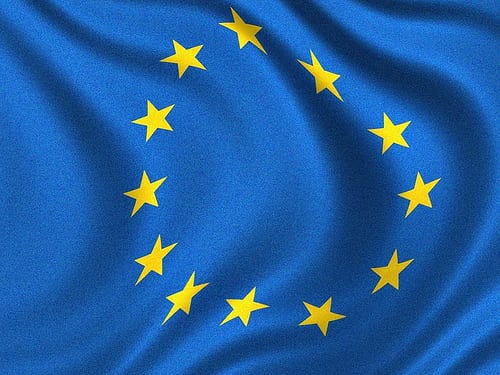
The European Union announced on Monday that it will put two billion euros towards two ambitious science projects. Source: Flickr
The European Union announced on Monday that it will put two billion euros towards two ambitious science projects: graphene research and the Human Brain Project. The two were selected from 26 proposals in an effort to return Europe to the forefront of leadership in scientific research. The EU lags behind the US, Japan, and South Korea in scientific research, with China close on its tail (1).
Graphene is an emerging material that is 300 times stronger than steel and more conductive than copper. In 2004, researchers first separated a single-atom layer of graphene by peeling away layers of pencil lead using Scotch tape (3). Six years later, the Nobel Prize went to these researchers for the potential of this thin yet sturdy material in revolutionizing electronics. It could be next to replace a whole range of materials, including silicon on circuit boards, and would push the creation of faster, stronger, and more flexible consumer electronics. “So you’ve heard of Silicon Valley,” Neelie Kroes, the European commission vice president said in the funding announcement, “Where in Europe wants to be known as ‘Graphene Valley?’ That’s the billion-euro question I am putting to you today.” (2)
Beyond electronics, graphene could also be used to build lighter cars and airplanes with better fuel efficiency. As plastic was the wonder material of the 20th century, graphene is expected to revolutionize the 21st century (1).
The Human Brain Project will require supercomputers 1000 times more powerful than those in existence today. The project hopes to encompass all the research that has been and will be done on the brain in a computer simulation. Henry Markram is a professor at the Ecole Polytechnique Federal of Lausanne in Switzerland and leads the Human Brain Project. “It is not impossible to build a human brain and we can do it in 10 years,” he said at a TED conference over three years ago. “If we build it correctly it should speak and have an intelligence and behave very much as a human does” (3).
The system will create models of neural circuit organization and understand how they give rise to behavior and cognition. An integrated understanding of the brain could lead researchers to the root of diseases such as Alzheimer’s (4). New drugs could be tested in the system for side effects, and the brain’s enormous processing power could be adapted for computing. However, Markram has struggled to find funding, for many perceive the project to involve too much fundamental science. Pharmaceutical and computing companies had refused to fund the project, and it could only continue with significant public funding.
These landmark decisions were not wholly welcomed. Rejected finalists in the competition included FutuICT, which was developing a planetary scale computer capable of predicting events such as natural disasters. Furthermore, controversy remained with the Human Brain Project. Some neuroscientists have strongly opposed the project, openly calling it “crap” (4). Funding in neuroscience was already limited, and such massive funding in a single project could stifle further research in other areas.
In her announcement, Kroes said that “this multi-billion dollar competition rewards home-grown scientific breakthroughs and shows that when we are ambitious we can develop the best research in Europe.” Previous scientific initiatives had run in two or four-year cycles, but the commission anticipates that this funding process will deliver results more quickly (1). Each project is to receive €54 million from the EU research budget, and national governments will match the amount. More money will be fed into the programs as they reach certain landmarks, and the billion will be distributed to each through a decade (2). Half of the money is to come from companies, institutes, and universities (1).
Both projects are stretched across a multitude of research centers. While graphene research is led by professor Jari Kinaret of Chalmers University of Technology in Sweden, the project involves the University of Cambridge in England and Nokia in Finland. Markram is a professor at the Ecole Polytechnique Federal in Switzerland, and the project encompasses 87 institutions, ranging from the Institut Pasteur in France to I.B.M. in the US (1).
These grand plans still hinge on politics, as the amount of funding may depend on the battle between the leaders of the bloc and the size of the next long-term budget (1). Regardless, hopes are high that these projects will stimulate European research and technology.
References:
- J. Kanter, 2 Science Projects to Receive Award of 1 Billion Euros (January 2013). Available at: http://www.nytimes.com/2013/01/28/world/europe/2-science-projects-to-receive-billion-euro-award.html. (2 February 2013)
- European Projects to model human brain, explore grapheme win up to €1B ($1.34 billion) each (January 2013). Available at: http://articles.washingtonpost.com/2013-01-28/world/36583514_1_material-graphene-human-brain-project. (2 February 2013)
- R. Weverbergh, ‘Human Brain’ and graphene research get a 1 billion € funding boost from EU (January 2013). Available at: http://www.whiteboardmag.com/human-brain-and-graphene-research-get-a-1-billion-e-funding-boost-from-eu/. (2 February 2013)
- M. Waldrop, Nature. 482, 456-458(2012).
Leave a Reply